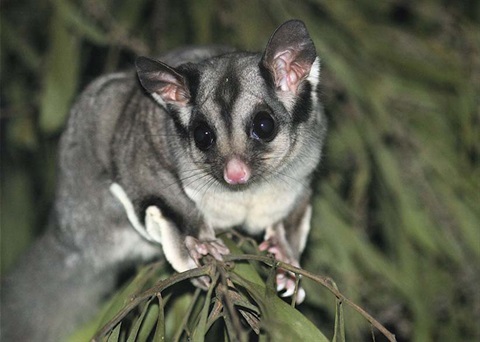Native Wildlife in Monash

Native animals are animals that are indigenous to a given region or ecosystem.
The City of Monash is home to many native wildlife species that all play an important role in biodiversity.
Biodiversity is important as it sustains natural systems and keeps our local environment healthy and vibrant. Having diverse plant and animal species also helps our ecosystems become more resilient to survive changing processes such as development and climate change.
Many species have been affected by changes to our natural environments that have lead to a loss of habitat and biodiversity. Meaning wildlife in Monash may face greater challenges finding shelter, food and water sources.
Find out more about how you can protect wildlife through habitat gardening or creating habitat structures at your home, school or workplace, through our Gardens for Wildlife program.
If you find injured wildlife like possums or birds, please contact Wildlife Victoria on 03 8400 7300 or visit Wildlife Victoria - Australian Wildlife website for more information.
Identify and record wildlife observations
There are many great apps that make identifying wildlife really easy.
You can see what you can find in your own garden or when you are out in the local area during your exercise break. Have a go with these ones, you’ll be an expert before you know it!
- Melbourne Water frog census: Record a frog call and add it to data collection for frog research. It has frog call recordings for easy identification.
- Birdlife Australia Aussie Birdcount: Walks you through how to identify every bird you see.
- iNaturalist: Take a photo of any plant or animal and the program and other experts make suggestions on what species they think it is.
- Museums Victoria Fauna App: Combines animal descriptions with photos, as well as animal calls, distribution maps, conservation status, butterfly flight times, frog calling times and depth information for marine species.
- FungID App: A free and open phone application that helps to predict and identify mushroom and fungus observations you make. Find fungus names, where they have been locally observed and other information about species.
Wildlife of Monash
The most common mammals visiting Monash gardens include possums, bats and sometimes even echidnas.
Bats play a role in pollination, seed dispersal and insect population control.
Flying foxes or fruit bats can fly for many kilometres each night searching for available fruit and usually only stop over for short visits each year.
Insectivorous bats or microbats are also very active at night, and we have over 11 species of microbats in Monash. You may not be able to find or see these little bats as they can be as tiny as a fingernail and make sounds outside of our hearing range!
Possums can be seen on a regular basis as they can live in highly suburban areas. They are protected from harm or capture under the Wildlife Act (1975).
Possums eat a variety of leaves, flowers and fruits from a wide range of plants. The Common Brushtail Possum may also eat grass, fungi, bird eggs and baby birds.
Native butterflies, bees and insects
Native invertebrates such as butterflies, bees, ladybirds, ants, beetles, spiders, dragonflies benefit the environment in many ways. They are our plant pollinators, our waste recyclers, our pest eaters and an important source of food for many native birds, frogs, reptiles and mammals.
Butterflies
Australian Painted Lady
Meadow Argus Butterfly
Dainty Swallowtail (Papilio anactus) (ala.org.au)
Common Grass Blue Butterfly
Native Bees
Blue banded Bee
Leafcutter Bee
Resin Bees (Megachile) (aussiebee.com.au)
Cuckoo Bees
Other insects
Blue-spotted Hawker (Adversaeschna brevistyla) (ala.org.au)
Lamprima aurata - Golden Stag Beetle | Atlas of Living Australia (ala.org.au)
Bogong Moth
Greengrocer Cicada
Parrots and large birds
Parrots feed on a variety of food sources that can include flowers and seeds of Eucalyptus, She-oaks and Bottlebrush. Some feed mainly on ground sourcing indigenous grass seed, ground tubers or grubs.
Large birds feed on small mammals, lizards and large insects. Ensuring you have one or more large trees in your garden will provide roosting an nesting spots for them to rest and hunt from. You could consider adding a nest box in your tree to provide habitat for large birds, bats or possums.
Parrots
Yellow-tailed Black Cockatoo
Musk Lorikeet
Gang-Gang Cockatoo
Crimson Rosella
Large birds
Australian Magpie
Grey Currawong
Powerful Owl
Tawny Frogmouth
Frogs
Frog population have undergone serious decline in recent decades and a third of the species are now listed as threatened worldwide. Nine species of frog in Eastern Australia have already been listed as extinct in the last 20 years.
Frogs have been vulnerable to habitat loss and feral animal predation but are also susceptible to disease, pollution and climate change. You can support frogs by building a frog bog or pond in your garden. The prey of each frog differs based on the species with some eating insects, lizards and sometimes even other frogs!
Southern Bell Frog
Spotted Marsh Frog
Striped Marsh Frog
Brown or Whistling Tree Frog